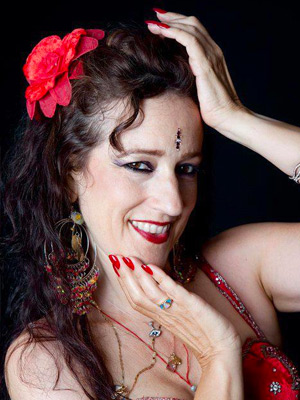 I know people who are adventurous but Tamalyn is one of the few whom I would describe as an Adventurer. She is a dancer, a teacher, an author and filmmaker. In a world where safety, lawsuits and cultural conservatism are rampant she consistently seeks out those corners of the world that would be deemed by the mainstream as dangerous or unworthy of attention. And in these remote villages she finds stories that are more human than anything we see on the news. Everything Tamalyn does is a reminder of what someone can do when they stop worrying about what other people think and follow their heart.
I know people who are adventurous but Tamalyn is one of the few whom I would describe as an Adventurer. She is a dancer, a teacher, an author and filmmaker. In a world where safety, lawsuits and cultural conservatism are rampant she consistently seeks out those corners of the world that would be deemed by the mainstream as dangerous or unworthy of attention. And in these remote villages she finds stories that are more human than anything we see on the news. Everything Tamalyn does is a reminder of what someone can do when they stop worrying about what other people think and follow their heart.
How would you describe you what is it that you do?
I teach bellydance, and produce supplementary cultural information in the way of books, music, and films. These can range from instruction on Middle Eastern dance, to an introduction to life in the Muslim world, and films about dances of East Africa.
Have you always done this for a living or did you transition from something else? What triggered your decision to make a change?
I have always been a bellydancer, but over the years it has transitioned from being a performer to running a dance school and non profit organization, then being a touring instructor, allowing me time and resources to make films and write.
What is the most challenging thing about practicing your craft? How do you deal with that challenge?
The most challenging thing is the stigma that goes with this dance form. I deal with the challenge through trying to educate dancers and the public about dance as art, culture and how it can enhance and heal people's lives.
Do you still practice? If so, what do your practice sessions look like?
I do. It depends on if I have a show coming up. Preparation for a show is merely warming up, then doing the dance between 3-7 times. Otherwise, I practice in 2 hour segments, with warm up, Ipod shuffle (improv to random music), and targeted work on shimmies, veil, zils or vintage songs that I want to better understand and express.
Where do you find inspiration?
I find inspiration from watching people on the street, from watching non-professionals dance for joy, and from what comes out when I am practicing.
Where are you when you have the most a-ha moments?
Usually in a studio - either teaching or practicing.
What do you do to maintain a creative flow?
Practice, keep learning and travel.
How much do you rely on feedback from other to help shape your ideas?
I don't.
What is the greatest obstacle to creativity?
Negativity and fear that there is not enough for everyone. Or holding onto ideas/knowledge and not sharing.
When you complete a project, how often does it resemble your initial concept or conceived idea? How important is this for you?
It develops and unfolds as it goes along. I have a concept, but never expect to control the outcome. That is how I do theater shows or festivals.
How do you know when you’re done?
My dances are improvised, so they are never done or never done the same way twice.
How do you resolve creative differences with clients or creative partners?
I try not to have creative differences. I collaborate with people whose artistic vision I respect and who respect mine.
What keeps you motivated even if you don’t connect personally with the project?
If I don't personally connect I am not motivated.
What do you do when you are stuck and have some sort of deadline or other pressure?
I don't usually feel stuck.
How do you achieve your creative vision with a limited budget?
I usually visualize the outcome and enough money usually comes my way to do what I want.
What are the top 3 tools in your creative tool kit? ie. software, pencil, paper, journal etc.
Ipod, glue and rhinestones.
What are the top 3 creative habits that have proven to be the most useful for you in your career?
Visualization, tenacity, and lots of work.
If you could offer a single piece of advice to a budding
professional, what would it be?
Don't stop learning.
Learn more about Tamalyn.